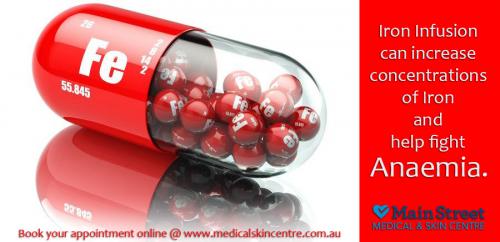A detailed guide to iron deficiency and its treatment!

Iron deficiency is one of the most common nutritional deficiencies and is the major cause of anaemia around the world. This is a disease that is either due to an increased need for iron by the body or decreased absorption or amount of iron intake. There are a number of signs that dictate of iron deficiency in a human’s body and these signs are inclusive of fatigue, decreased work, slow cognitive, social development during childhood, difficulty maintaining body temperature, decreased immune function and an inflamed tongue. Get a blood test if you find any such symptom to diagnose whether your body is iron deficient.
There are a number of possible treatments of iron deficiency inclusive of some dietary changes and iron supplement intake. We have, therefore, compiled a detailed guide for iron deficiency and its treatment for you to have a look at.
What is iron and why a human body needs it?
Iron is a mineral that every human body needs. It is a part of all cells and does many things in our body. For instance, it carries oxygen from our lungs throughout our bodies and other such things are part of the tasks performed by iron. Lack of haemoglobin in a human body is known as anaemia. This mineral also helps muscles to store and use oxygen. It is a part of enzymes that are used in many cell functions. Enzymes help a human body to digest foods and also deals with handling reactions that occur within the bodies. When a human body lacks iron, many of its parts are being affected.
What is an iron deficiency?
It is a condition that arises because of too little iron in the body and the term is interchangeably used with the disease known as ‘anaemia’. Basically, iron deficiency ranges from depleted iron stores without functional and health impairment to deficiency with anaemia which affects the functioning of several organ systems.
This is an issue of major concern because it can delay normal infant motor or mental function. The iron deficiency anaemia during pregnancy can lead to small or premature babies. Such infants are likely to have severe health issues or they have the probability to die within the first year of their birth. Other than these, there are many points of concern to be aware of.
Who is at most risk for iron deficiency?
• Young kids and pregnant women because of rapid growth and higher iron needs.
• Adolescent girls and women of childbearing age because of menstruation.
• The infants and kids at a higher risk of iron-related diseases are of the following groups:
o Babies born small or premature.
o Babies fed with cow’s milk before age 12 months.
o Formula-fed babies who do not get iron-fortified formulas.
o Children with chronic infections or restricted diets.
How is iron deficiency treated?
• If you find symptoms of iron deficiency, it is better to see your healthcare provider. Your treatment will depend on many factors such as age, health and the cause of this disease.
• Iron infusion is one of the best ways to treat iron-related diseases in which iron is delivered to the body of the patient intravenously i.e. into a vein using a needle. This method of delivering medication or supplementation is also known as an IV infusion i.e. intravenous infusion.
• The health care providers can prescribe in taking iron supplements for a period of time and can ask you to return after a period to have your haemoglobin or hematocrit test.
• If your healthcare practitioner found that your body is low in iron, he can ask you to eat iron-rich food and may also prescribe iron supplement for you to raise the iron levels in your body.
It is therefore important to be diagnosed by your health care provider because the iron deficiency can have causes that aren’t related to your diet. The treatment advice from your health practitioners will be specific to your needs.
Comments